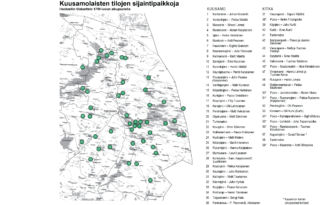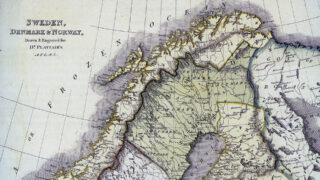The 18th century was a time of rapid population growth in Kuusamo. At the end of the century, the 3 000 inhabitants earned their living on more than 200 independent farms. Tenants and new tenants with their children and servants made up more than half of the entire population, landless people were in the minority. The last time the Sámi were recorded in the population register was 1760, when there were three of them in Kuusamo. However, it is evident that their culture in some form influenced the population. Lapland’s priest Jakob Fellman mentions that when he visited Kuusamo’s Pyhävaara in 1825, he had noticed offerings brought to the seida there.
Population growth and the increase of farms mostly happened naturally: families had many children. The children leaving the home circle established new farms, clearing more farmland for them. The first-generation settlers’ main occupation, the slash-and-burn cultivation, lost its importance even before the middle of the 18th century. It was replaced by animal husbandry. At the end of the century, there were more than 20 cows on the largest farms, in addition to several horses and reindeer and other livestock.
Procurement of winter feed became a central problem in livestock management. Feed was obtained from natural meadows and marshes and from the shores of lakes and streams. In the summer, families were in the meadows for weeks gathering hay in barns and stacks, spending the night in meadow saunas. The dried feed was taken home in the winter when the snow came. Reindeer were mostly used as draft animals, which were more useful than horses on roadless roads.
Kuusamo also started to practice large-scale reindeer herding. The largest reindeer farms had several hundred animals, while the Sámi had mostly had less than ten reindeer per household. The main function of the reindeer for the Sámi had been to act as a draft animal and as a decoy in deer hunting. For peasant reindeer owners, the main thing was meat production. The best meats were transported in winter on reindeer caravans to be sold in Oulu, Tornio, or the large population centers of White Sea Karelia. Live reindeer were also transported for sale. Butter and other livestock products as well as game, fish and other natural foods were taken from Kuusamo on reindeer caravans. On the other hand, grain and other products needed here were brought to Kuusamo.
The White Sea Karelia and the Gulf of Bothnia’s brokerage through Kuusamo was partly held by White Sea Karelian merchants. They did not pay customs for the products they transported, which is why the Swedish crown established a customs house in Kantokylä in the 1780s. Through it, efforts were made to direct foreign trade and collect tax revenue for the state, mostly with poor success, as merchants often found a detour past the customs house.

